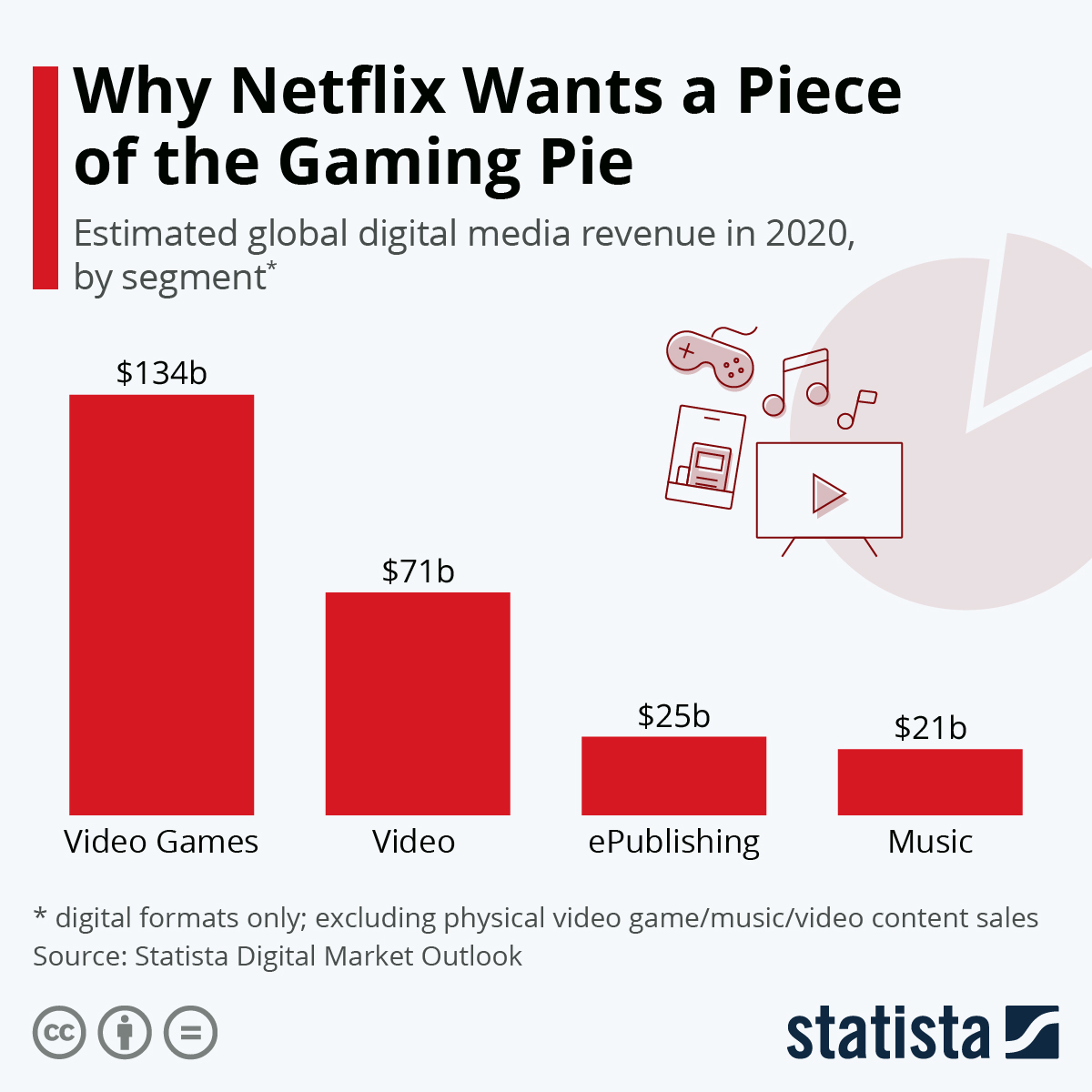When Netflix finally announced its push into gaming last week, it didn’t come as a surprise to those following the company closely. Having long viewed gaming as a major competitor in the battle for their users’ time – sleep is another one according to CEO Reed Hastings – the company had confirmed its long-rumored entry into gaming in its Q2 earnings report in July. “We view gaming as another new content category for us, similar to our expansion into original films, animation and unscripted TV,” the company wrote in its letter to shareholders back then, leaving open the timing of its expansion into the field.
Considering the ever-growing popularity of video games, both on-the-go and at home, it is only logical for Netflix to add gaming to its service. “We earn consumer screen time, both mobile and television, away from a very broad set of competitors. We compete with (and lose to) Fortnite more than HBO,” the company famously wrote in 2019, at the height of the Fortnite boom.
But not only is gaming the favorite pastime of tens of millions of people around the world, it is also the biggest digital entertainment sector from a monetary perspective, by far. According to estimates from Statista’s Digital Market Outlook, digital gaming revenue amounted to $134 billion worldwide last year, exceeding the combined total for digital video, music and publishing. And while Netflix’s gaming push is still in its very early stages – a total of five games are available on Android and iOS devices for now – the company’s ambitions are big and its pockets are deep, as its highly successful push into original scripted content has proven over the years.




















